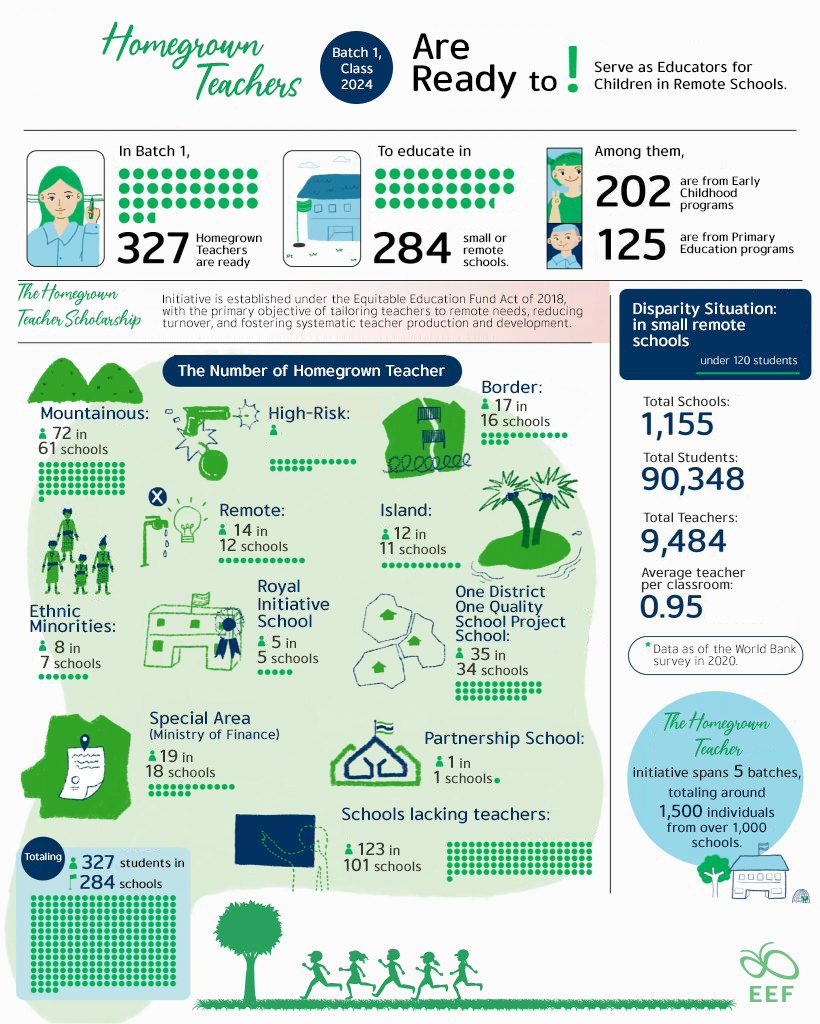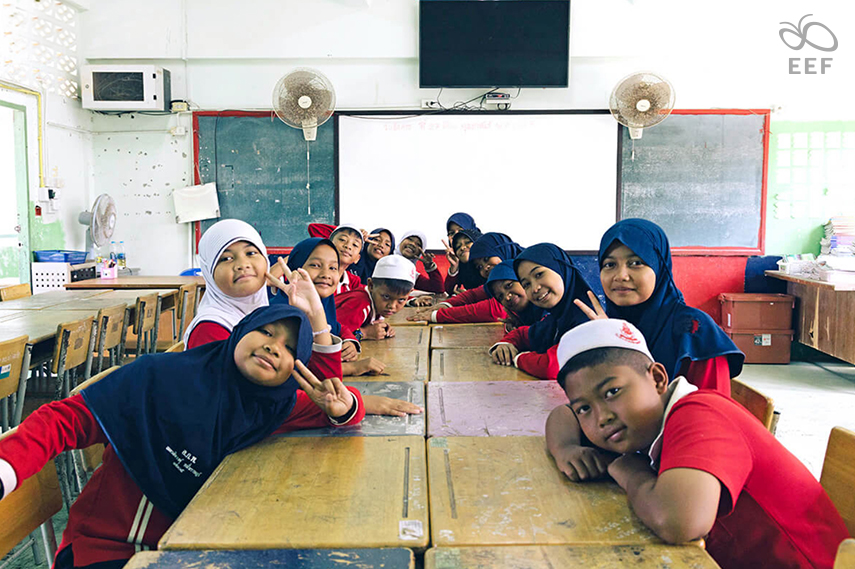
Homegrown Teachers (Batch 1, Class 2024) Are Ready to Serve as Educators for Children in Remote Schools. In Batch 1, 327 Homegrown Teachers are ready to educate in 284 small or remote schools. Among them,
- 202 are from Early Childhood programs
- 125 are from Primary Education programs

The Homegrown Teacher Scholarship Initiative is established under the Equitable Education Fund Act of 2018, with the primary objective of tailoring teachers to remote needs, reducing turnover, and fostering systematic teacher production and development.
The Number of Homegrown Teacher Students Distributed across Various Areas:
- Mountainous: 72 in 61 schools
- High-Risk: 21 in 18 schools
- Border: 17 in 16 schools
- Remote: 14 in 12 schools
- Island: 12 in 11 schools
- Ethnic Minorities: 8 in 7 schools
- Royal Initiative School: 5 in 5 schools
- One District One Quality School Project School: 35 in 34 schools
- Special Area (Ministry of Finance): 19 in 18 schools
- Partnership School: 1 in 1 school
- Schools lacking teachers: 123 in 101 schools
Scholarship timeline:
- Skill enhancement and community development training: 4 years
- Teaching in hometown schools: 6 years
Disparity Situation:
in small remote schools (under 120 students):
- Total Schools: 1,155
- Total Students: 90,348
- Total Teachers: 9,484
- Average teacher per classroom: 0.95
*Data as of the World Bank survey in 2020.
The Homegrown Teacher initiative spans 5 batches, totaling around 1,500 individuals from over 1,000 schools.

Small remote schools, also known as “Protected Standalone Schools,” serve not only as educational hubs but also as gateways to opportunities for local youth. In response to the pressing issue of teacher shortages in these schools, the Homegrown Teacher initiative has been launched, aiming to cultivate educators directly within their hometowns and tailor them to the specific needs of their remote areas. Dedicated to producing teachers committed to community development, it seeks to systematically address the scarcity of educators in these regions. Through curricula designed to cater to the educational requirements of remote areas, the initiative plans to generate five cohorts of teachers over five years. This holistic approach involves a transformation of the teacher production and development system, to deploy 1,500 teachers to over 1,000 destination schools within the next five years. This initiative not only promises to alleviate the immediate issue of teacher shortages but also holds the potential to foster sustainable community development and empower local youth to thrive in their environments. Following deployment, the initiative will offer support and assessment to the “new teachers” over six years, emphasizing their roles as both educators and community developers in their respective areas.

